A Guide to the Best Lenses for the Canon Rebel T8i
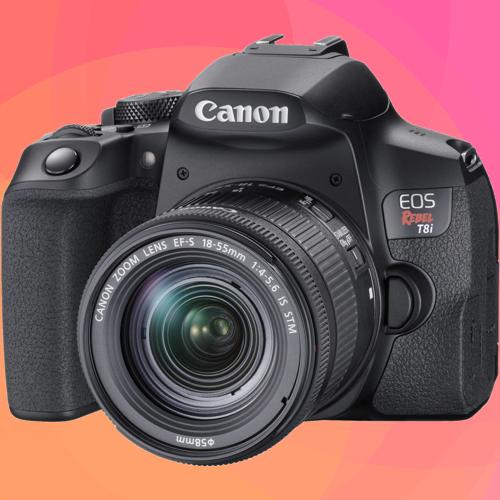
With the right lens, the Canon Rebel T8i can deliver world class images. There is a large choice of Canon EF and EF-S lenses available.
Add in third-party manufacturers, and there are lenses for every type of photography at multiple price points.
- Lens Compatibility: The Canon Rebel T8i is compatible with all Canon EF and Canon EF-S lenses. You can also use lenses from third-party manufacturers, as long as they’re designed for the Canon EF mount.
- Availability: Canon lenses and compatible third-party lenses are widely available, from online retailers to brick-and-mortar photography stores.
Best Canon Rebel T8i Lenses:
Affiliate Advertising Disclosure
Outside the Shot is a participant in the Amazon Services LLC Associates Program, an affiliate advertising program designed to provide a means for sites to earn advertising fees by advertising and linking to Amazon.com.
As an eBay Partner, I may be compensated if you make a purchase. I also participate in affiliate advertising programs with KEH and Adorama. More can be found on the Affiliate Discolsure page.
- Best All-Around Zoom: Canon EF-S 17-55mm f/2.8 IS USM
- Best Telephoto Zoom: Sigma 18-300mm f/3.5-6.3 DC OS
- Best Prime Lens: Canon EF 50mm f/1.8 STM
- Best Lens for Video: Canon EF-S 10-18mm f/4.5-5.6 IS STM
- Best Lens for Portraits: Canon EF 85mm f/1.8 USM
- Best Lens for Sports & Wildlife: Tamron SP 150-600mm f/5-6.3 Di VC USD G2
- Best Lens for Landscapes: Canon EF 20mm f/2.8 USM
- Best Lens for Macro: Canon EF-S 60mm f/2.8 Macro USM
Canon Rebel T8i Lens Compatibility and Options
As mentioned, the Canon Rebel T8i is compatible with all EF and EF-S mount lenses. However, there’s a broader spectrum of lenses available when you consider third-party manufacturers like Sigma, Tamron, and others. Here are some lens types you can utilize for the Canon Rebel T8i:
- Standard Lenses: These are versatile lenses great for various shooting scenarios. They usually have a range of 18-55mm or similar.
- Prime Lenses: These lenses have a fixed focal length and are known for their sharpness and large aperture. They are excellent for portraits and low light photography.
- Wide-Angle Lenses: Ideal for capturing landscapes or architectural photography, these lenses have a smaller focal length (less than 35mm).
- Telephoto Lenses: With a focal length of more than 70mm, these lenses are great for sports, action, or wildlife photography.
- Macro Lenses: Perfect for close-up shots, macro lenses allow you to capture tiny details with precision.
- Zoom Lenses: These lenses cover a wide range of focal lengths, making them versatile for different situations.
All-Around Best Zoom Lenses
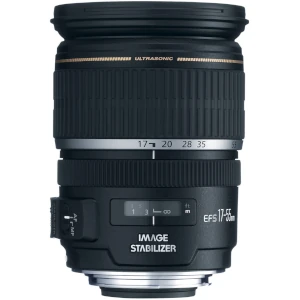
Canon EF-S 17-55mm f/2.8 IS USM: The lens was built for APS-C sensors which can use the EF-S mount and has the quality similar to Canon’s L-series. It is a major improvement from the standard zoom lens sold as a kit with the EOS Rebel T8i.
The large maximum aperture is constant through the zoom range allowing for a shallow depth of field and spectacular background blur. Camera shake is reduced thanks to built-in image stabilization.
If you wanted to narrow down all the Canon lenses obtainable to only one to use on your camera, this is going to be the best choice.
See current price and more information on:
Sigma 17-50mm f/2.8 EX DC OS HSM FLD: By having image stabilization, razor sharp photographs can be captured at shutter speeds up to 4 stops lower than when not using stabilization. With the fast aperture and excellent zoom range, the lens would work for all types of photography from landscapes to portraits.
Judging by the glowing reviews, owners love this lens. It could end up permanently mounted to your camera.
See current price and more information on:
Canon EF-S 15-85mm f/3.5-5.6 IS USM: With a comparable zoom range of 24-136mm in FX format, it is a terrific pick for everyday use. It is also among the best selections for a single travel lens.
See current price and more information on:
Best Telephoto Zooms
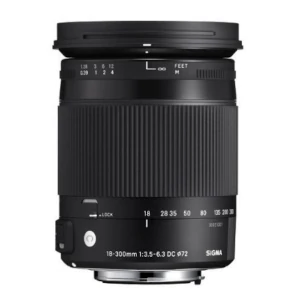
Sigma 18-300mm f/3.5-6.3 DC OS: This is similar to having two or three zoom lenses packaged together. The 16.6x zoom ratio means all focal lengths from wide angle to telephoto are available. Built with 17 elements in 13 groups, four of which are FLD and 1 SLD element, means the lens is able to get sharp crisp, high-quality images, without having to worry about chromatic aberrations.
The enormous zoom span does come at the expense of being large and heavy. There are other lenses that might be more practical to spend a day carrying around with the Canon EOS Rebel T8i.
See current price and more information on:
Canon EF-S 18-200mm f/3.5-5.6 IS: Here’s a small and lightweight lens that is still equippedwith a usable zoom range. This is an awesome solution that gives really good performance, 4 stops of stabilization, all at a cost-effective price. This is the lens to get to avoid unwanted size and weight.
See current price and more information on:
Canon EF 75-300mm f/4-5.6 III: Smaller and lighter weight than the other recommendations previously mentioned, which is often a benefit if you do not want to bring a bulky kit. The focal length is equivalent to 120-to-480mm on a Canon APS-C sensor, which all EOS Rebel cameras have.
It’s actually quite affordable, thanks to the absence of built-in stabilization. This lens works best outdoors with ample amounts of light.
See current price and more information on:
Best Prime Lenses
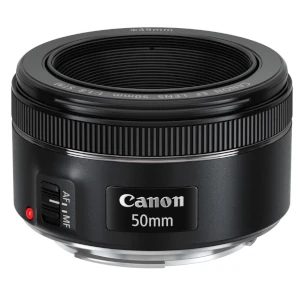
Canon EF 50mm f/1.8 STM: This is one of the top lenses manufactured by Canon as it offers outstanding image quality, but still comes in a compact and lightweight package. The fast f/1.8 aperture makes this timeless focal length an excellent choice for low light shooting. An absolute must have lens for all photographers that can find a place in any camera kit.
Don’t buy the old version as the motor that controls the focusing system is laggy and noisy. By looking to save a little bit of cash, you may not be fond of the result. This is doubly true if you plan to have the ability to capture video.
See current price and more information on:
Canon EF-S 24mm f/2.8 STM: Out of all the options available for the Canon EF-S mount, this is the smallest and thinnest. This wide angle lens is referred to as a “pancake” on account of the minimal size, making it an ideal pick for travel photography. It can capture pictures as close as 6 inches (16 cm).
See current price and more information on:
Sigma 35mm F1.4 Art DG HSM: An amazing creation demonstrating what contemporary optical engineering is capable of. Shot wide open, pictures are sharp, from corner to corner. The Hyper-Sonic Motor delivers fast, accurate, and quiet autofocus.
See current price and more information on:
Best Lenses for Video & Vlogging
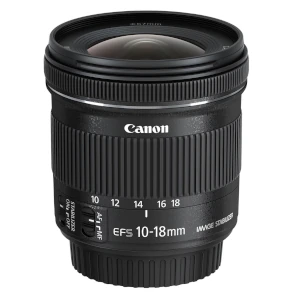
Canon EF-S 10-18mm f/4.5-5.6 IS STM: Out of all the lenses for Canon, this is the best choice for capturing video. The ultra-wide-angle zoom range is great for vlogging and creating videos. The stepping motor (STM) facilitates smooth and precise autofocus that is not going to generate any noise which can ruin audio. It’s also small and light enough to not become tiresome to handle when on the Canon EOS Rebel T8i.
Take into account that you could also buy the Canon portrait and travel lens kit that contains the 50mm f/1.8 STM. The bundle is an ideal solution if you would like to have two of the best lenses for Canon, while at the same time saving a little bit of money.
See current price and more information on:
Tokina AT-X 116 PRO DX-II 11-16mm f/2.8: It is very simple to switch from MF to AF without removing your hand from the focus ring since there is the one-touch focus clutch mechanism. The lens is also a reasonable choice to get into astrophotography with its constant f/2.8 aperture.
See current price and more information on:
Sigma 10-20mm f/3.5 EX DC HSM ELD SLD: Here’s another wide-angle zoom that is loaded with optical engineering. The internal focusing system allows the use of a petal-type lens hood which generally will do a substantially better job of blocking light than a standard hood. A hyper sonic motor can provide noiseless functionality.
See current price and more information on:
Best Lenses for Portrait Photography
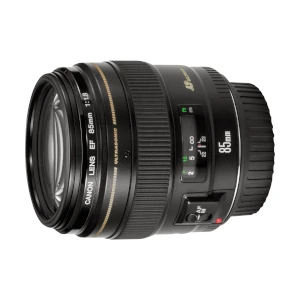
Canon EF 85mm f/1.8 USM: It may be the most desired lens for portrait photography offered by Canon. The large f/1.8 aperture is well suited for photography in low light and can be used to produce a shallow depth of field, with creamy bokeh, to separate the subject. For wedding photographers, this is a extremely important lens to own.
See current price and more information on:
Sigma 50mm F1.4 Art DG HSM: A real professional level lens that definitely is a good choice for portraits along with landscape, street, and studio work. There’s hardly any distortion or vignetting and it is amazingly sharp from corner to corner, even wide open.
See current price and more information on:
Canon EF 100mm f/2 USM: Similar to the Canon 85mm f/1.8, but was designed with a slightly narrower field of view. Similar to the other two lenses, it’s terrific for low-light photography in a compact package that is easy to manage.
This lens is not currently being manufactured, so finding a copy in stock may be hard. There are still plenty of used copies available. Make sure to check a variety of sites to get the lowest price.
See current price and more information on:
Best Lenses for Sports & Wildlife
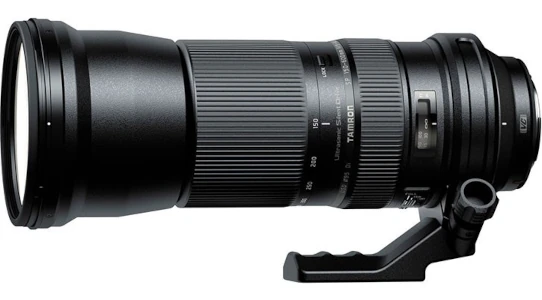
Tamron SP 150-600mm f/5-6.3 Di VC USD G2: Tamron created a big improvement with the release of this second gen lens. Photo quality level has become better through the whole zoom range and at the same time having a superior build quality. The autofocus system uses an ultrasonic silent drive motor which is astonishingly accurate and fast. With this on your camera, you will experience no problems taking great action or wildlife shots.
See current price and more information on:
Sigma 150-600mm f/5-6.3 Contemporary DG OS HSM: The Sigma offers a lightweight and portable build considering it is a hyper-telephoto zoom lens. Furthermore the hyper sonic motor and optical stabilization, there’s an accelerometer that helps to improve photographs when panning. As an additional benefit, there’s usually a promotional offer that includes additional accessories along with free shipping with the lens when you buy one. That’s nice because free camera gear is really hard to refuse.
See current price and more information on:
Canon EF 100-400mm F4.5-5.6L IS II USM: Undeniably, this lens has better image quality than the other two. However, that top quality performance goes hand and hand with a big price that is significantly bigger than that of the camera. One of the excellent features this lens has is a rotation-type zoom ring that has configurable torque control allowing the lens to be customized to personal preference.
See current price and more information on:
Best Lenses for Landscape Photography
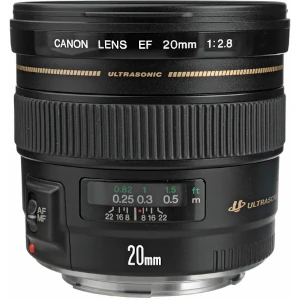
Canon EF 20mm f/2.8 USM: This is a wide angle lens that is surprisingly compact and light, weighing just 14.3oz (405g). There is a full-time manual focus override, even when set to AF, that enables critical focus to be obtained. If you plan to go hiking with the Rebel T8i, this lens is a good selection as it can fit into virtually every camera bag.
See current price and more information on:
Samyang 14mm f/2.8 IF ED UMC: This is a cheaper ultra-wide-angle lens with an integrated petal-type lens hood. An excellent pick for not solely landscape photography but also for astrophotography and real estate. It can focus as close as 14 cm (10.8 inches), but that will result in noticeable distortion.
See current price and more information on:
Sigma 20mm f/1.4 DG HSM Art: The widest lens in the Sigma Art series, the 20mm f/1.4 has got a professional build quality. Constructed with 11 groups having 15 elements with a 5 Special Low Disperson and a Low Dispersion glass element, axial chromatic aberration, spherical aberration, and field curvature are just about entirely gone.
It is a rather big and heavy hunk of glass. Don’t count on it to be well balanced when mounted on the camera.
See current price and more information on:
Best Canon Macro Lenses
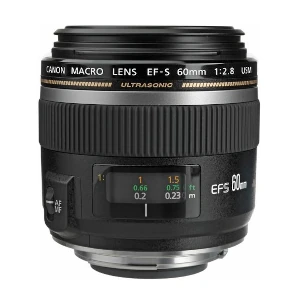
Canon EF-S 60mm f/2.8 Macro USM: A real macro lens, able to obtain 1:1 magnification, and the first to be produced for the EF-S mount. It has an internal focusing system, which means the front element does not turn when focusing. You are going to love the sharp images made by this lens. It is a great pick to use on the EOS Rebel T8i because of the value and compact size being difficult to outdo.
See current price and more information on:
Canon EF 100mm f/2.8L Macro IS USM: A top of the line pro L-series lens featuring stabilization and an internal focusing system. It is a great choice to use out into the field because it is weather sealed. Purchase this lens and you will never need to go searching for an alternative.
See current price and more information on:
Tamron AF 90mm f/2.8 Di SP A/M 1:1 Macro: With a recessed front element and a good working distance, you’ll probably never be required to make use of the lens hood. Take into account that it does not have an internal focusing system, so the lens will extend when focusing on close subjects.
Yet another potential drawback if you desire to use it for portraits is that there’s no built-in image stabilization. Working with flash will stop that from being a major problem.
See current price and more information on:
Lens Types for Various Photography Styles
Different lenses can vastly enhance your capabilities in various fields of photography. Here’s a guide to which lenses are most suitable for different styles of photography:
| Type of Photography | Recommended Lens |
|---|---|
| Portrait | 50mm prime lens or 85mm prime lens |
| Landscape | Wide-angle lens (10-22mm) or ultra-wide angle lens |
| Sports/Action | Telephoto lens (70-200mm) or super telephoto lens (200mm+) |
| Wildlife | Super telephoto lens (200mm+) or zoom lens |
| Macro | Macro lens (100mm or more) |
| Street | Standard zoom lens (18-55mm) or wide-angle lens |
| Astrophotography | Ultra-wide lens or fast prime lens (24mm f/1.4) |
Related Posts
Here is a list of posts related to the Canon Rebel T8i camera: